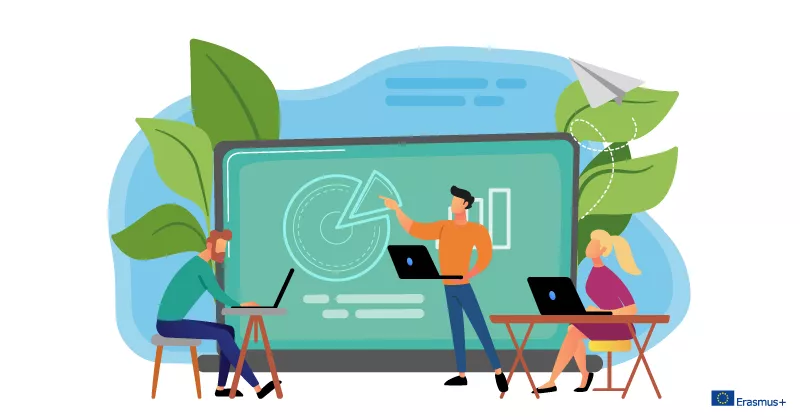EPALE discussion: Blended learning in adult education

During this year, education in all sectors has been challenged in unprecedented ways with the closure of all types of education institutions. This has resulted in much debate about the future development of a blended learning approach to the delivery of education at all levels.
Within this context, on Thursday 26 November 2020, starting from 10 a.m. until 4 p.m. CET, EPALE will be hosting an online discussion on blended learning in adult education.
The discussion will have a brand new format, starting at 10 with a 30 minutes live streaming, accompanied and followed by the discussion on the platform’s comments.
The live presentation will be delivered by Lauri Tuomi, the CEO of The Finnish Lifelong Learning Foundation (Kvs), and a board member of the European Association for the Education of Adults (EAEA). He will examine the question of a blended approach to adult education citing examples of how this worked in practice in Finland during the exceptional period of COVID-19. The perspective for the blended learning is long-term as this year is the 100th anniversary of distance learning in Finland.
The discussion will include the following topics:
- Is a blended approach to delivering adult education the best way forward in a situation of prolonged closure of adult education centres?
- What are the main challenges to implementing a blended approach to learning in adult education?
- What adult education initiatives and policies are required to implement a blended learning approach to adult education?
We invite you to share your experiences and reflections during our online discussion, facilitated by Dr. Tuomi and members of his team, and even before.
Comments are already open so participants can introduce themselves or post their comments in advance!
Watch below the live presentation on 26 November at 10 a.m. and the wrapping up session at 3:45 p.m. (CET)
Comments
Inverse Blended Learning
Great initiative and really
More than how (mixed approach) , we need to decide "about what"
I think the mixed approach
complex approach
Blended learning and low digital skills
Hi Anne, the issue is not
NSS Portugal - blended learning in adult education
We're waiting for your questions and ideas
Didactical opportunities
Indeed Johanni we need do
You are probably right. at
You speak from my heart
On the other hand, I have the hope that we are now (due to the pandemic) actually making progress.
Dear Johanni, thank you for
I find that I use time
remarks/aspects:chance to recognise advantages of other settings
I also see great advantages in asynchronous settings: as a teacher I have more time to think about answers. In face-to-face teaching, spontaneous, quick, precise answers are often expected (which of course is not always possible; teachers are not machines), in online settings the expectations are different.
I'm not sure if I understood you correctly here: "Often I also feel the environment itself still limits the teaching situations, and the possibilities there are of co-creation, joint ownership, distributed roles and group work."
Do you mean online situations?
If I have understood you correctly, then I would like to answer:
The environment always determines / influences the teaching situation. In face-to-face teaching, the room design / furnishing (sober/cool - homely/warm ...) influences the learning atmosphere and thus the learning. Online it is the same: Where are the participants? Do they feel comfortable there and can they concentrate and are inspired? How is the online space designed (also: what are my presentations like?). And here we can distinguish between rooms in which synchronous and rooms in which asynchronous learning/working takes place.
Each room has advantages and disadvantages and is in some ways limited. I think it is more helpful to think in terms of advantages and disadvantages than in terms of limitations.
In my own case I notice time and again that I compare online learning with face-to-face learning. I try to put a stop to this, because it robs me of the chance to recognise the advantages of other settings.


Dear Susana, thank you for